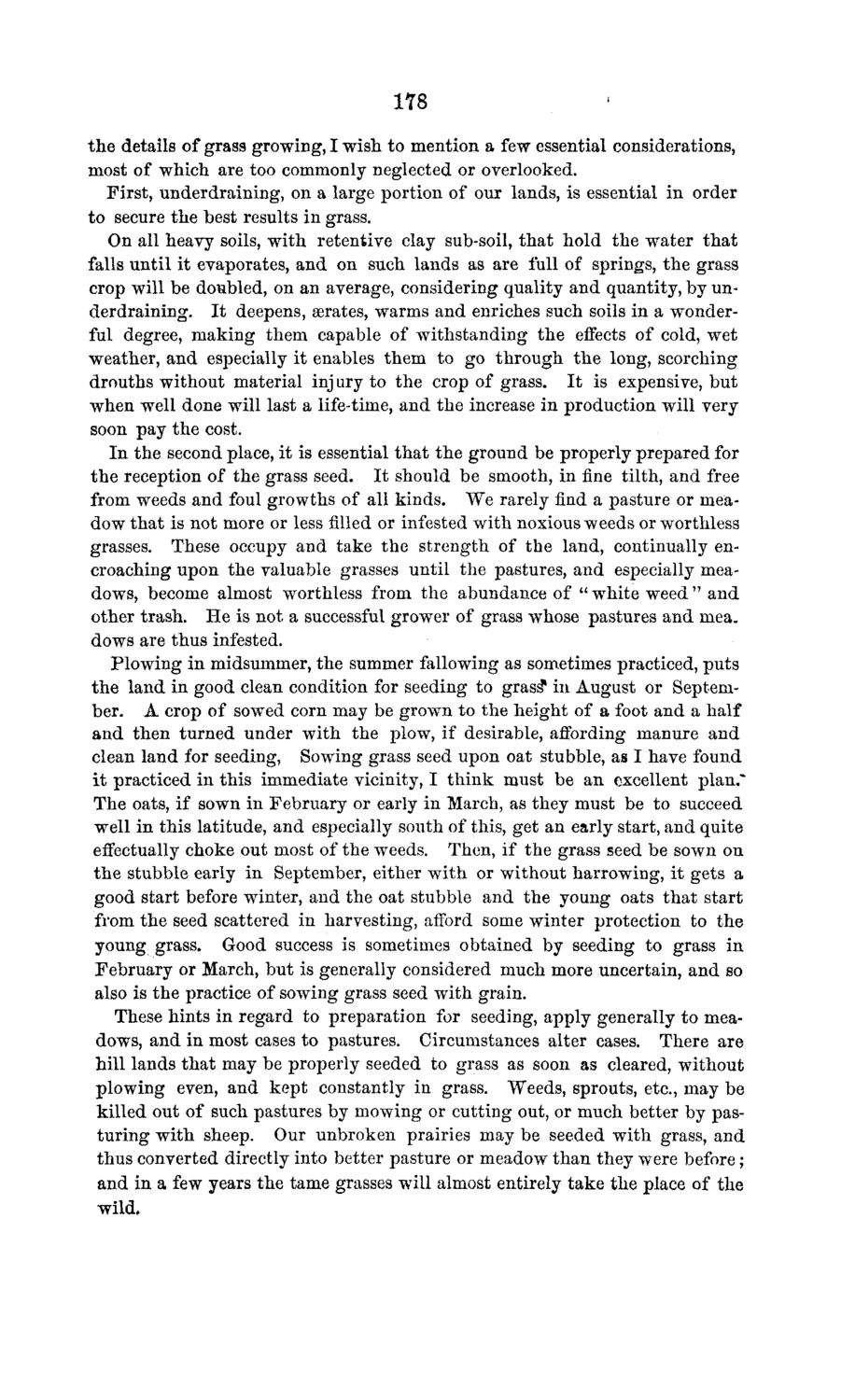| |
| |
Caption: Board of Trustees Minutes - 1869
This is a reduced-resolution page image for fast online browsing.

EXTRACTED TEXT FROM PAGE:
1T8 the details of grass growing, I wish to mention a few essential considerations, most of which are too commonly neglected or overlooked. First, underdraining, on a large portion of our lands, is essential in order to secure the best results in grass. On all heavy soils, with retentive clay sub-soil, that hold the water that falls until it evaporates, and on such lands as are full of springs, the grass crop will be doubled, on an average, considering quality and quantity, by underdraining. It deepens, aerates, warms and enriches such soils in a wonderful degree, making them capable of withstanding the effects of cold, wet weather, and especially it enables them to go through the long, scorching drouths without material injury to the crop of grass. It is expensive, but when well done will last a life-time, and the increase in production will very soon pay the cost. In the second place, it is essential that the ground be properly prepared for the reception of the grass seed. It should be smooth, in fine tilth, and free from weeds and foul growths of all kinds. We rarely find a pasture or meadow that is not more or less filled or infested with noxious weeds or worthless grasses. These occupy and take the strength of the land, continually encroaching upon the valuable grasses until the pastures, and especially meadows, become almost worthless from the abundance of " white weed " and other trash. He is not a successful grower of grass whose pastures and meadows are thus infested. Plowing in midsummer, the summer fallowing as sometimes practiced, puts the land in good clean condition for seeding to grass* in August or September. A crop of sowed corn may be grown to the height of a foot and a half and then turned under with the plow, if desirable, affording manure and clean land for seeding, Sowing grass seed upon oat stubble, as I have found it practiced in this immediate vicinity, I think must be an excellent plan." The oats, if sown in February or early in March, as they must be to succeed well in this latitude, and especially south of this, get an early start, and quite effectually choke out most of the weeds. Then, if the grass seed be sown on the stubble early in September, either with or without harrowing, it gets a good start before winter, and the oat stubble and the young oats that start from the seed scattered in harvesting, afford some winter protection to the young grass. Good success is sometimes obtained by seeding to grass in February or March, but is generally considered much more uncertain, and so also is the practice of sowing grass seed with grain. These hints in regard to preparation for seeding, apply generally to meadows, and in most cases to pastures. Circumstances alter cases. There are hill lands that may be properly seeded to grass as soon as cleared, without plowing even, and kept constantly in grass. Weeds, sprouts, etc., may be killed out of such pastures by mowing or cutting out, or much better by pasturing with sheep. Our unbroken prairies may be seeded with grass, and thus converted directly into better pasture or meadow than they were before ; and in a few years the tame grasses will almost entirely take the place of the wild.
| |